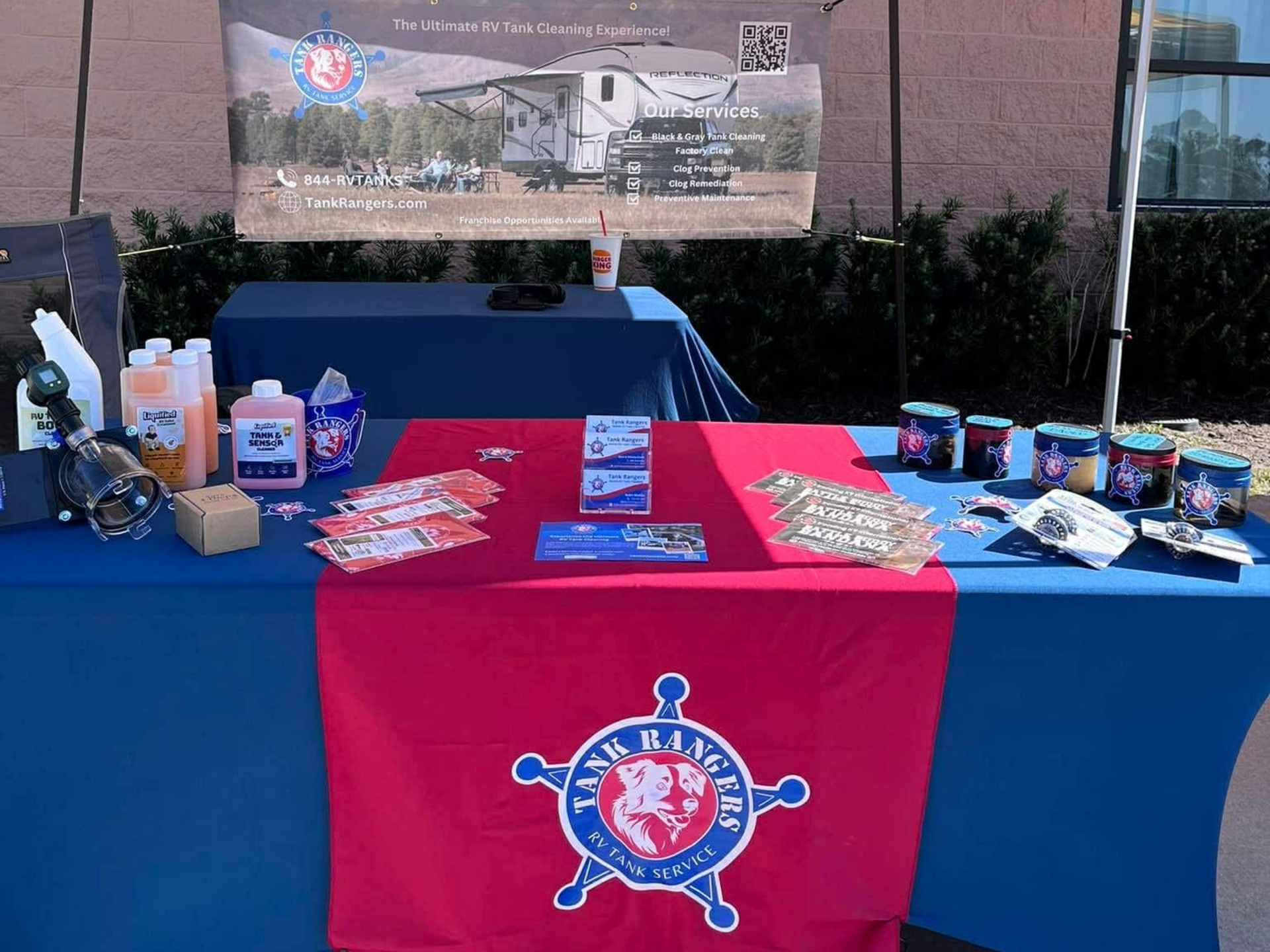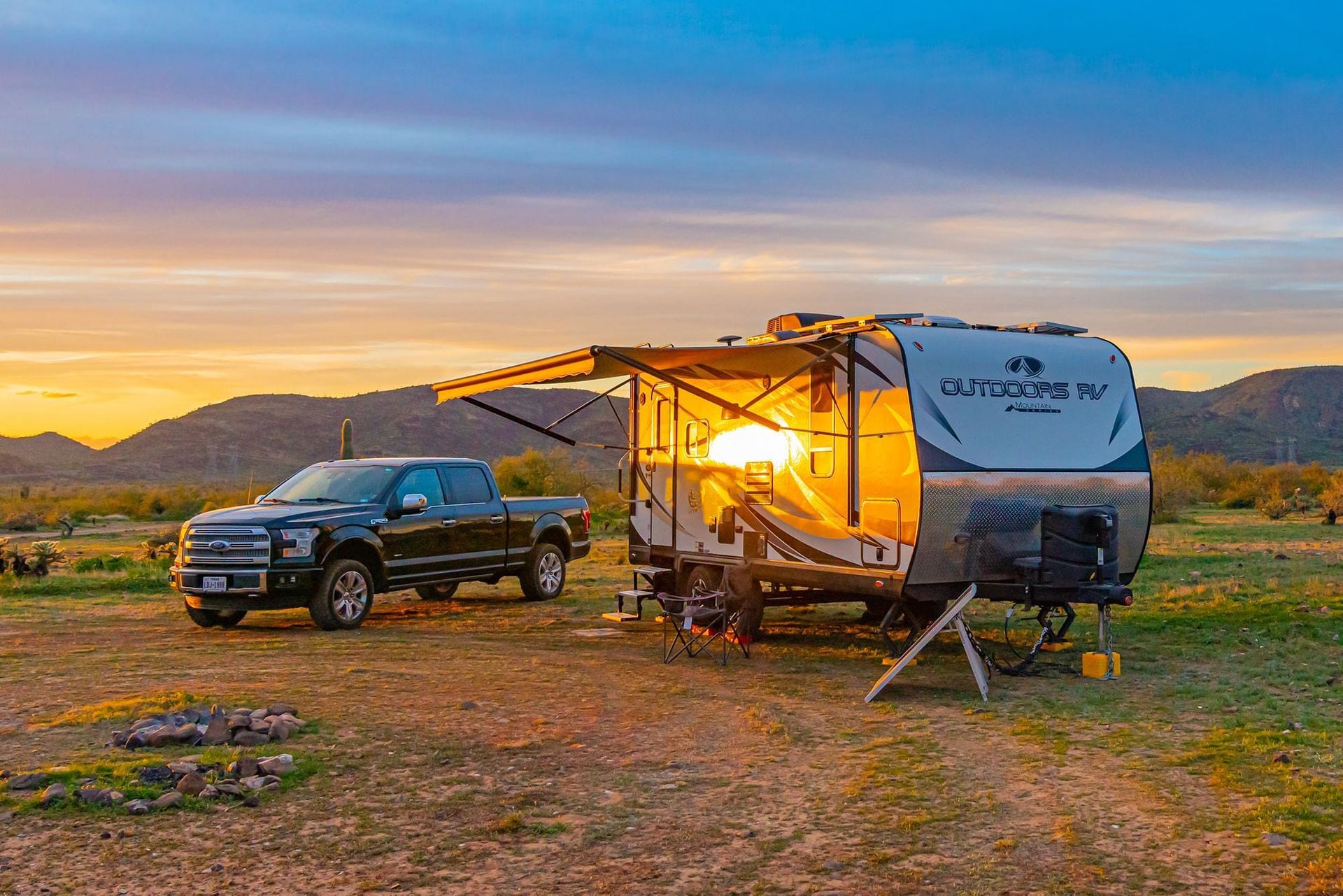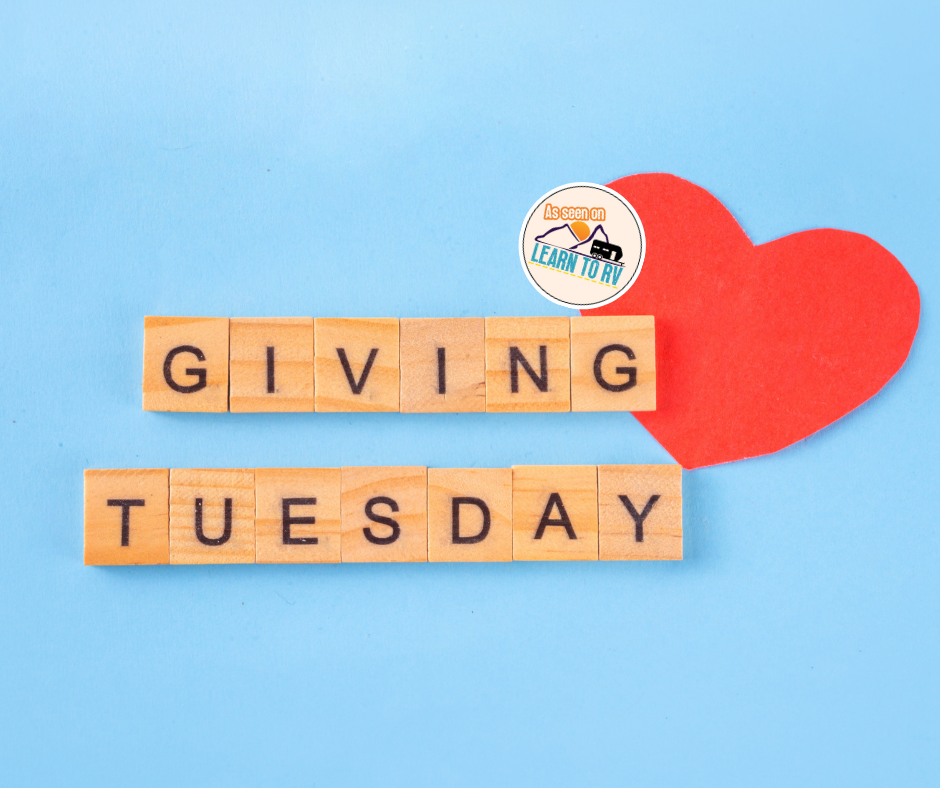Tongue Weight — The Hidden Half of Safe Towing
Nomadic Hawks • November 5, 2025
A Nomadic Hawks guide to real-world balance
Let’s be honest—tow ratings, payload charts, and axle limits can feel like alphabet soup.
Safe towing isn’t about memorizing specs—it’s about knowing where the weight really lands.
A stable tow starts with balance. Tongue weight—the load your trailer puts on the hitch—decides how the whole rig behaves.
Tongue weight is the portion of the trailer’s weight that presses down on the tow vehicle’s hitch. For bumper-pull trailers, it usually runs 10–15% of total trailer weight; for fifth wheels, 15–20% is the sweet spot. The goal is simple—enough weight on the hitch to stay stable, but not so much that it overloads the truck’s rear axle.
Too light, and the trailer sways. Too heavy, and the truck squats, steering fades, and braking stretches out.
The stickers—on the driver’s door, door pillar, and the trailer’s roadside—give numbers as built, not where your weight really lands with your gear, fuel, and people aboard.
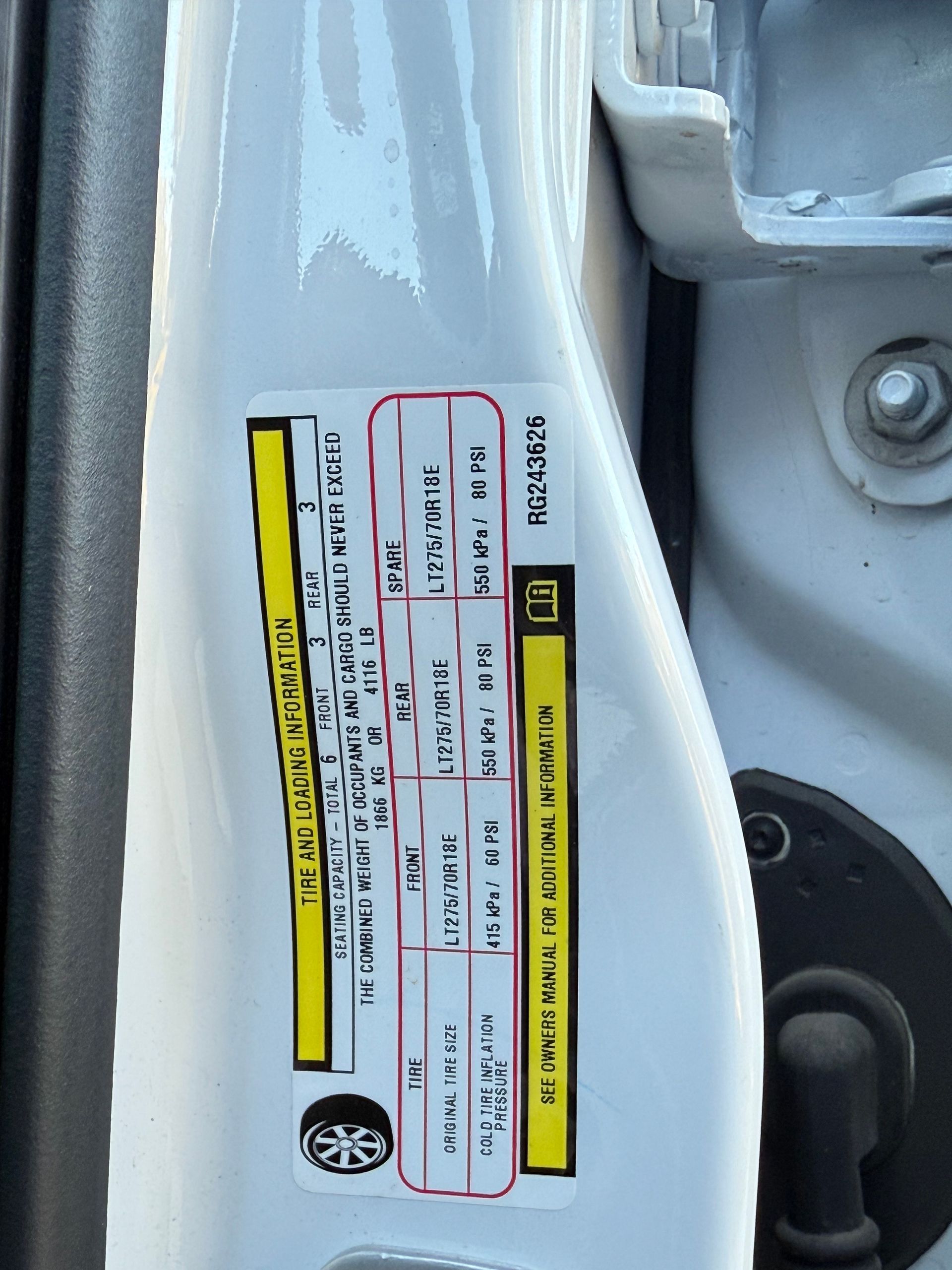
So, we put our one-ton truck and 40-foot fifth wheel on the scale to find out what the numbers actually mean—and how close “within limits” really gets in the real world.
Our one-ton is rated for 4,116 lb of payload and an 11,800-lb GVWR. The 40-foot fifth wheel carries a 16,130-lb GVWR on twin 7,000-lb axles, leaving 2,130 lb on the hitch by design—the factory pin weight before fuel, water, or gear change the picture. The next step is finding out what it really weighs.
Two weigh-ins tell the truth.
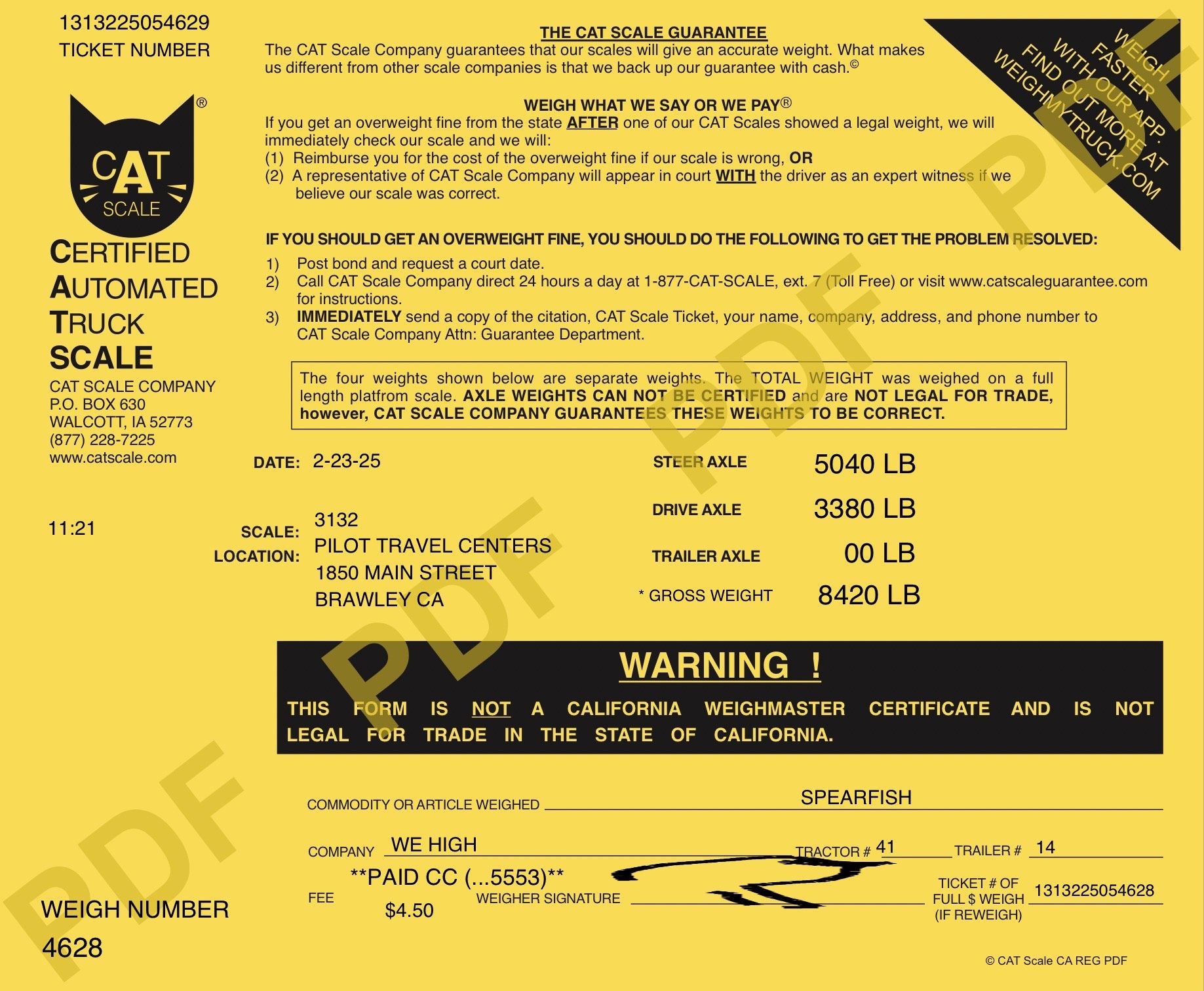
Truck only – 8,420 lb total
- Steer axle: 5,040 lb
- Drive axle: 3,380 lb
- (Baseline with full fuel, passengers, and normal cargo.)
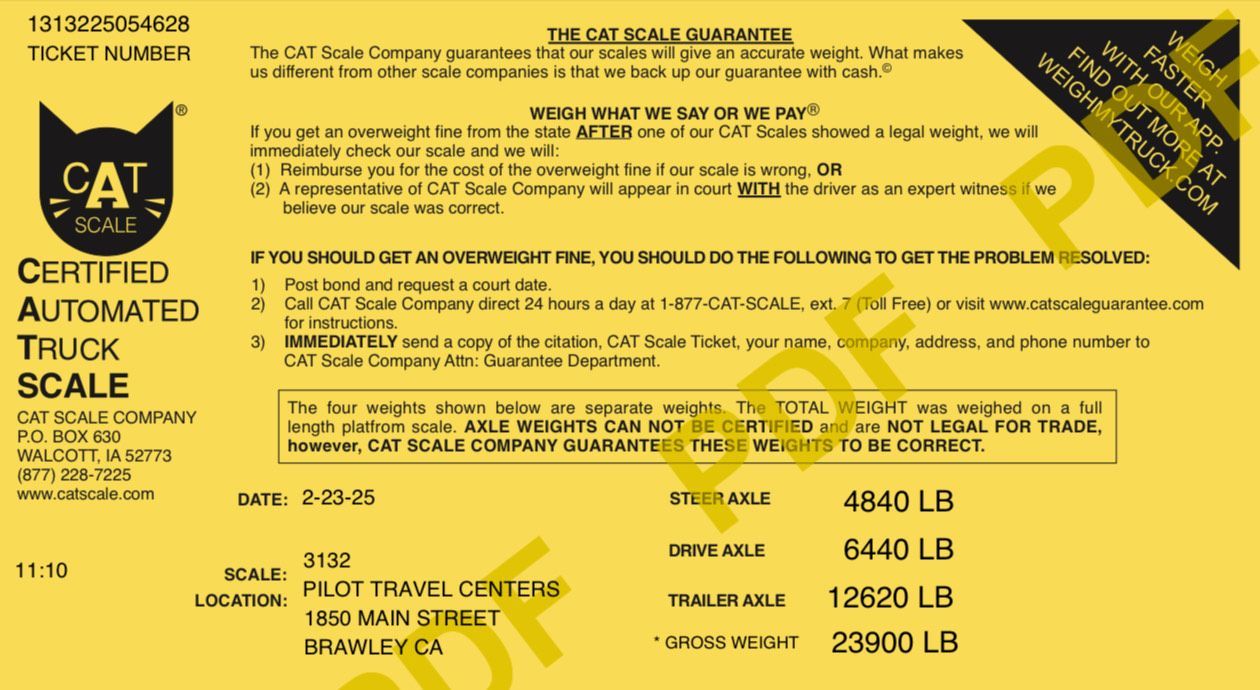
Truck + trailer – 23,900 lb total
- Steer axle: 4,840 lb
- Drive axle: 6,440 lb
- Trailer axles: 12,620 lb
- (Loaded, ready-to-tow setup.)
Now run the math:
- 23,900 − 8,420 = 15,480 lb → trailer gross weight
- 15,480 − 12,620 = 2,860 lb → pin (hitch) weight
What it means:
- Sticker vs remaining payload: The door sticker lists 4,116 lb, but the scale shows 11,800 − 8,420 = 3,380 lb of remaining payload.
- Rear axle: 6,440 lb on a 7,000-lb rating → 560 lb of headroom.
- Trailer axles: 12,620 lb on 14,000-lb rating → 1,380 lb of margin.
- Total trailer: 15,480 lb on 16,130-lb GVWR → 650 lb under max.
That 2,860-lb pin is about 18 % of the trailer’s 15,480-lb weight—right where stability lives. Less, and sway starts. More, and steering fades.
The truck’s rear axle at 6,440 lb sits 560 lb under its 7,000-lb limit—safe, but nearly full. Add more cargo, and the margin’s gone.
The trailer rides light but solid: 12,620 lb on 14,000-lb axles, below its 16,130-lb GVWR.
That’s a lot of numbers—but here’s the bottom line: the only way to know is to weigh it. The scale shows balance, not guesses. If your numbers don’t line up cleanly, you may need to adjust your cargo.
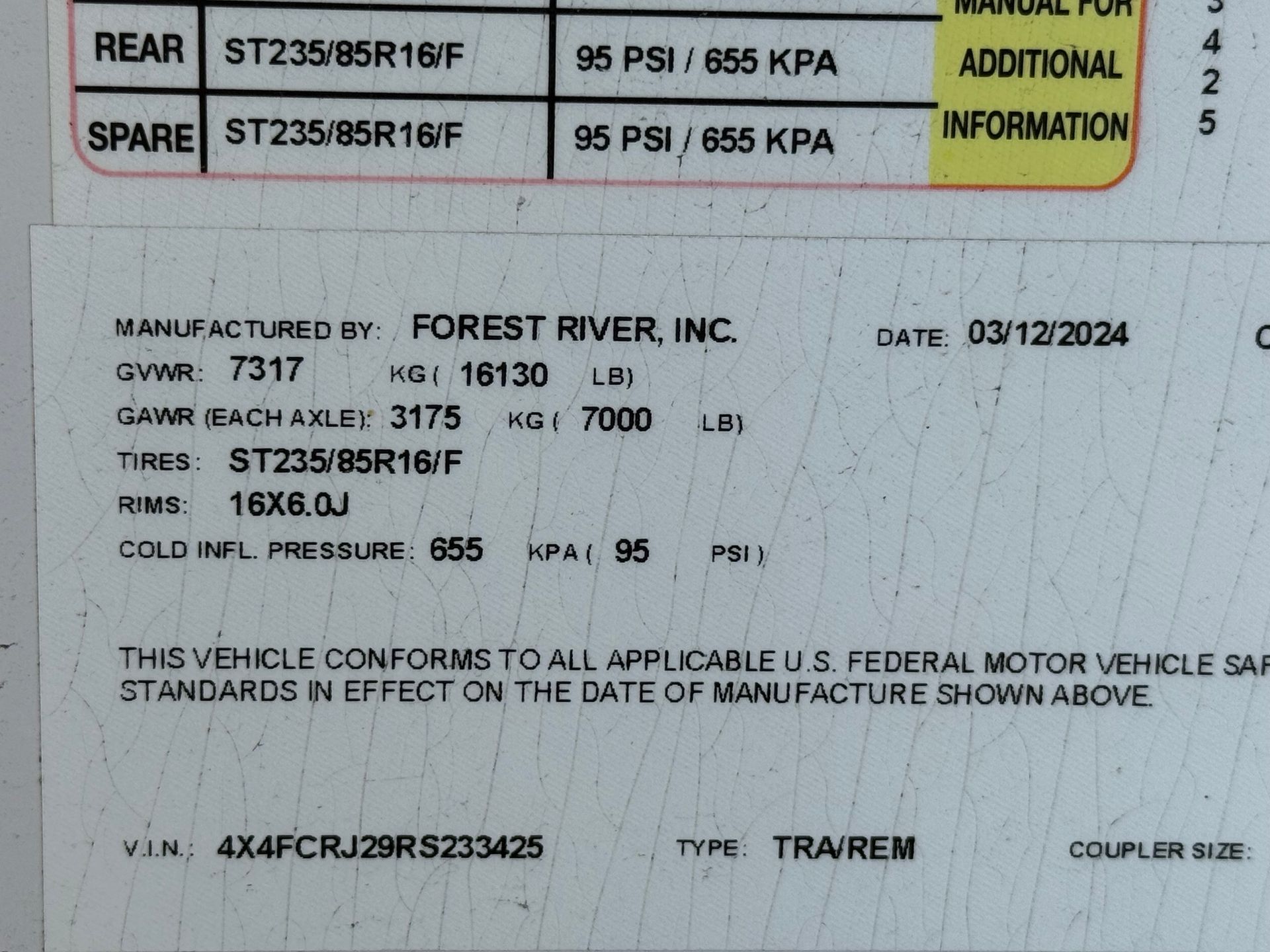
Other blogs you might like...


